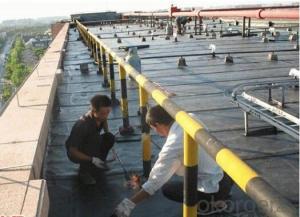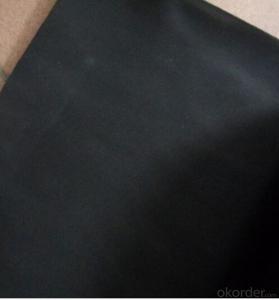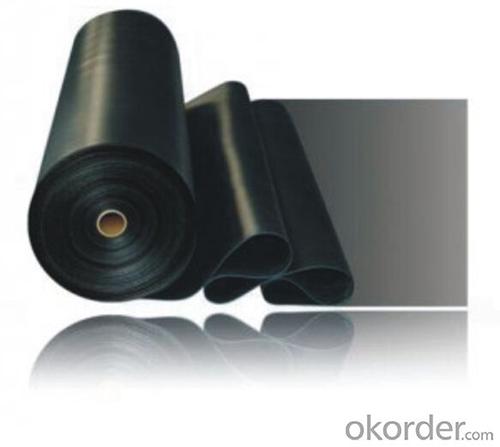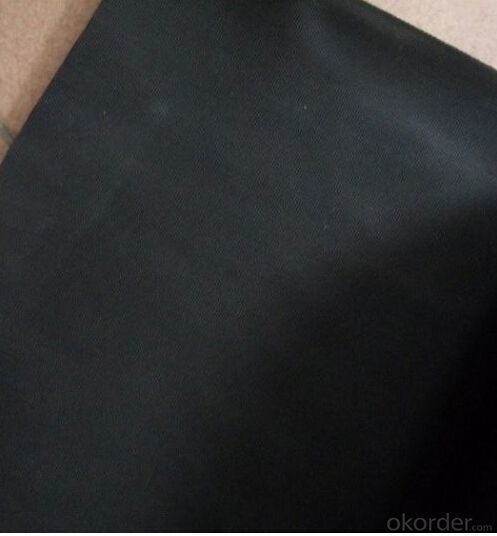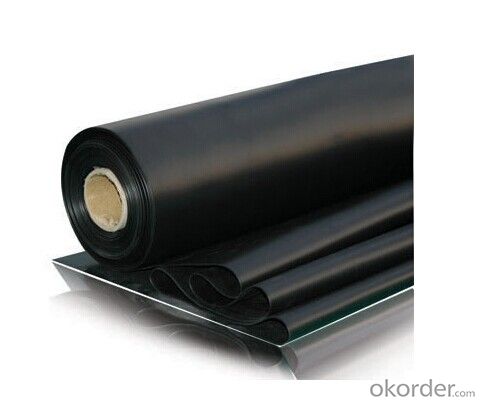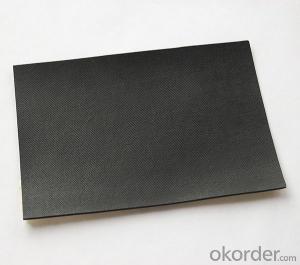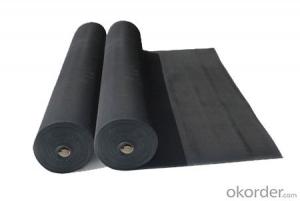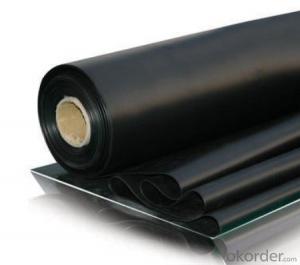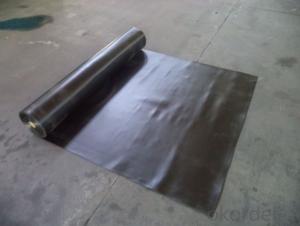Top Quality EPDM Waterproofing Weldable Membrane
- Loading Port:
- Qingdao
- Payment Terms:
- TT OR LC
- Min Order Qty:
- 2000 m²
- Supply Capability:
- 100000 m²/month
OKorder Service Pledge
OKorder Financial Service
You Might Also Like
EPDM waterproofing Rubber membrane
1. Product Feature for EPDM Waterproofing Membrane:
a. UV resistant and anti-corrosion
b. High tensile strength and good elongation.
c. Easy installation, solid joint, and no environmental pollution
d. Good rooting penetration resistance
e. Service life up to 50 years
2. Detail Specification of EPDM Waterproofing Membrane:
Type | EPDM Waterproof Membrane | ||
Material | EPDM Rubber | ||
Thickness | 1.2mm | 1.5mm | 2.0mm |
Weight(kg/m2) | 1.54-1.58 | 1.79-1.83 | 2.25-2.29 |
Size | 1.2m(width) * 20m(length)/roll | ||
Type | Vulcanized & Weldable | ||
Pattern | Non-reinforced(homogeneous) | ||
Packing | 24sqm/roll, with plastic bag | ||
Color | Black | ||
Application | Roof, basement, pond, Lake, steel structure roof, swimming pool, underground, tunnel, etc | ||
3. Advantages of EPDM Waterproofing Membrane:
1) Excellent physical and mechanical performance
2) High tearing resistance
3) Good deformation adaptability
4) High puncture resistance
5) High aging resistance
6) UV resistance
4. Application of EPDM Waterproofing Membrane:
(1) Roofs, Basement, Toilets
(2) Industrial and civil building waterproofing
(3) Geosynthetic liner for swimming pool, channels, irrigation system
(4) Especially suitable for projects with high requirements in durability, anti-corrosion and deformation
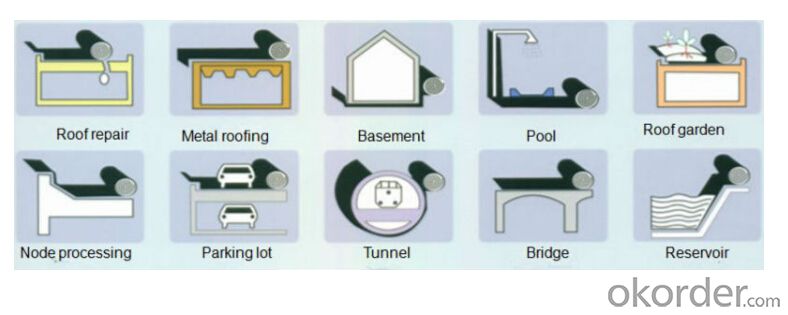
4. Some photos:
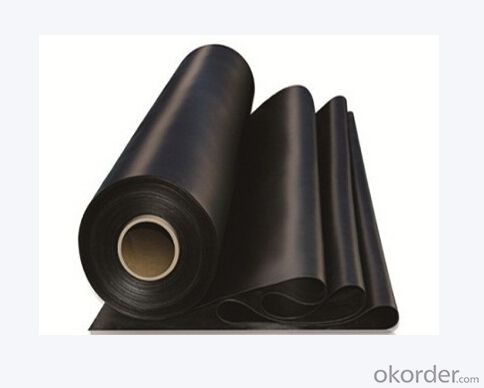
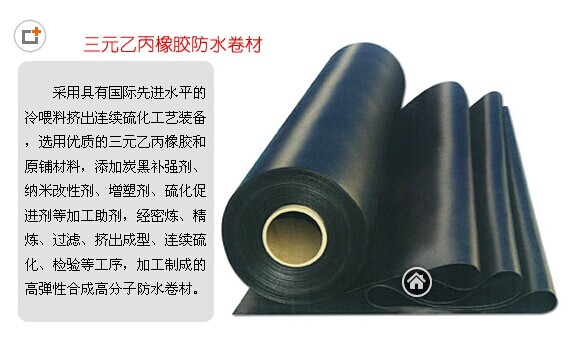
- Q: Can a waterproofing membrane be used for podium decks or plaza areas?
- Yes, a waterproofing membrane can be used for podium decks or plaza areas. Waterproofing membranes are commonly used in construction to prevent water penetration and protect the underlying structure from moisture damage. In outdoor areas like podium decks or plaza areas, where exposure to rain or other forms of water is common, a waterproofing membrane can provide an effective barrier against water infiltration and help maintain the integrity of the deck or plaza surface.
- Q: Is a waterproofing membrane resistant to algae or moss growth?
- Yes, a waterproofing membrane is typically resistant to algae or moss growth. The materials used in waterproofing membranes are designed to prevent the growth of organic matter, including algae and moss.
- Q: Can a waterproofing membrane be used in residential buildings?
- Yes, a waterproofing membrane can be used in residential buildings. It is commonly used in basements, bathrooms, and other areas prone to moisture to prevent water damage and leakage.
- Q: Are waterproofing membranes resistant to sulfuric acid exposure?
- Yes, waterproofing membranes are generally resistant to sulfuric acid exposure. These membranes are designed to provide a barrier against water and other chemicals, including sulfuric acid. However, the level of resistance may vary depending on the specific type and quality of the membrane. It is advisable to consult with manufacturers or experts to ensure the membrane's compatibility with sulfuric acid exposure in specific applications.
- Q: Does a waterproofing membrane prevent water vapor transmission?
- Yes, a waterproofing membrane is designed to prevent the passage of water vapor, ensuring that no moisture can penetrate through the membrane.
- Q: Does a waterproofing membrane require any special maintenance?
- Yes, a waterproofing membrane does require some special maintenance. It is important to regularly inspect the membrane for any damages or signs of wear and tear. Additionally, periodic cleaning and removal of debris is necessary to ensure its effectiveness. Proper drainage and regular resealing or reapplying of waterproofing coatings may also be needed to maintain the membrane's longevity and functionality.
- Q: Can a waterproofing membrane be used for balconies or decks?
- Yes, a waterproofing membrane can be used for balconies or decks. It is a common solution to prevent water damage and ensure the longevity of these outdoor structures.
- Q: Is a waterproofing membrane resistant to saltwater or other corrosive substances?
- Yes, a waterproofing membrane is generally resistant to saltwater and other corrosive substances. Waterproofing membranes are designed to provide a barrier against moisture and water penetration, which includes protection against corrosive substances. These membranes are typically made from materials such as modified bitumen, PVC, EPDM, or TPO, which have inherent resistance to saltwater and other corrosive elements. Additionally, some manufacturers may also incorporate additional protective layers or coatings to enhance the membrane's resistance to corrosive substances. However, it is important to note that the level of resistance can vary depending on the specific type and quality of the waterproofing membrane used. Therefore, it is crucial to choose a high-quality membrane that is specifically designed for the intended application, such as saltwater environments or areas exposed to other corrosive substances.
- Q: Can a waterproofing membrane be used for roofing applications?
- Yes, a waterproofing membrane can be used for roofing applications. Waterproofing membranes are specifically designed to prevent water infiltration, making them ideal for protecting roofs from leaks and water damage. They provide a durable and effective barrier against moisture, ensuring the roof remains watertight.
- Q: How long does it take for a waterproofing membrane to cure?
- The curing time for a waterproofing membrane varies depending on the specific product and environmental conditions, but generally, it takes around 24 to 48 hours for a waterproofing membrane to fully cure.
Send your message to us
Top Quality EPDM Waterproofing Weldable Membrane
- Loading Port:
- Qingdao
- Payment Terms:
- TT OR LC
- Min Order Qty:
- 2000 m²
- Supply Capability:
- 100000 m²/month
OKorder Service Pledge
OKorder Financial Service
Similar products
Hot products
Hot Searches
Related keywords
